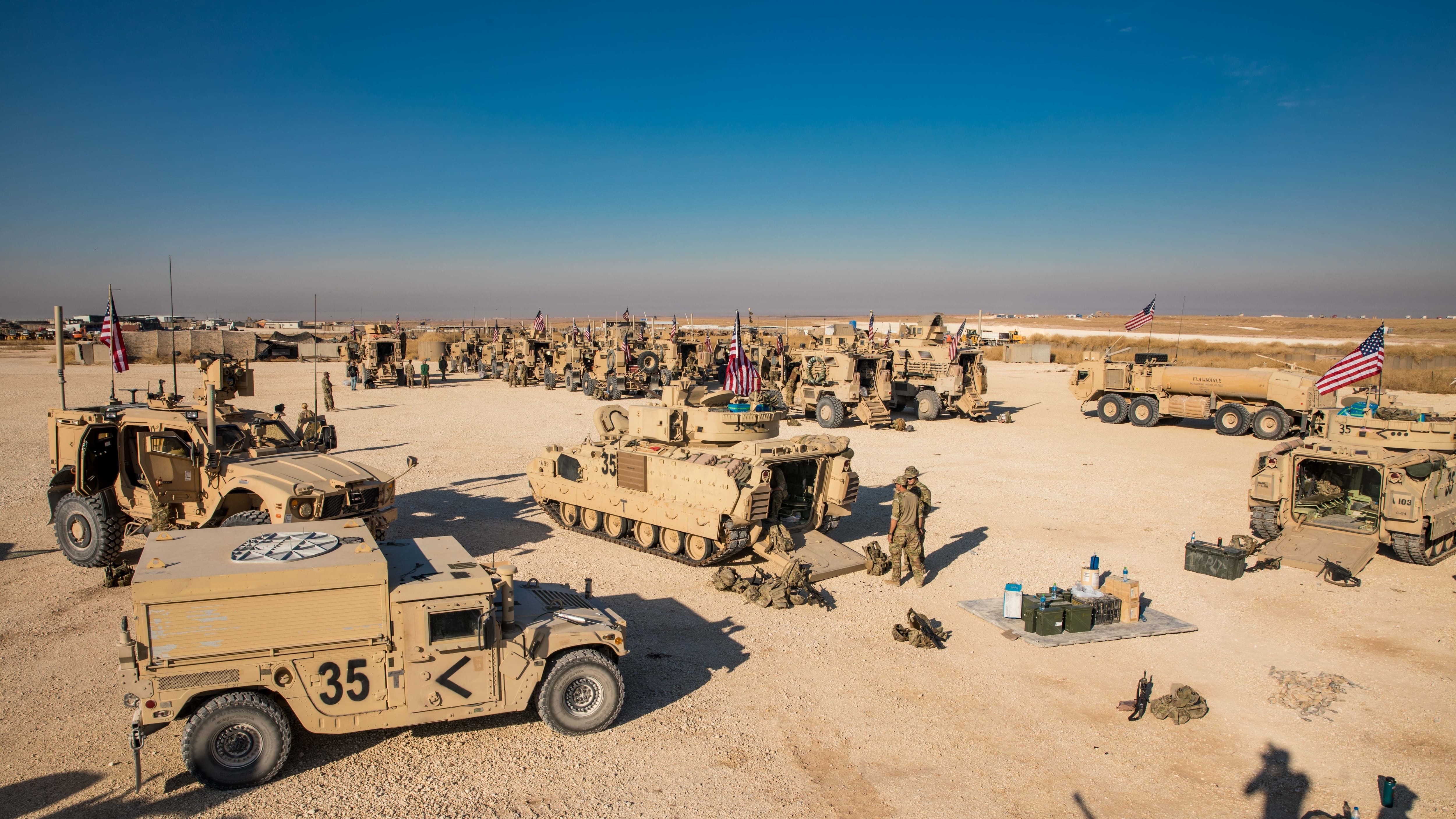Bradley fighting vehicles sent into Syria to guard oil fields from a potential Islamic State resurgence were pulled from the country after roughly one month, U.S. Army Central Command confirmed.
Mechanized soldiers from the 30th Armored Brigade Combat Team were dispatched in late October but were pulled sometime in November after combined patrols with Turkish forces “never materialized" and the “mission requirements changed,” said Army Lt. Col. David Olson, a spokesman for the Army’s regional component command.
“Originally, what was going on in the battlefield, they were still doing combined patrols with the Turks, and then that stopped,” Olson said over the telephone. “They didn’t get that far.”
Exact numbers weren’t given, but Olson said there were “only a handful” of Bradleys sent in the first place. Soldiers rotating through that part of Syria have in the past received combat action badges and combat infantry badges after skirmishing with ISIS fighters, but the none of the mechanized soldiers received them during their month-long stint.
The Bradleys were dispatched in late October following President Donald Trump’s decision to withdraw U.S. troops from northern Syria after Turkey launched an incursion on Oct. 9 to combat U.S.-backed Kurdish forces near the border.
The Operation Inherent Resolve coalition still “has a mix of Motorized Infantry, Special Operations, and other troops partnered with the [Syrian Democratic Forces] to defeat ISIS remnants and protect critical infrastructure in Deir ez Zor and Hasakah Provinces," said Army Col. Myles B. Caggins III, a coalition spokesman, in an email. “We adjust troop composition based on operational needs."

Traditionally, motorized units are those that utilize “soft-skin” vehicles, like Humvees, while mechanized units involve armored vehicles, like the Bradley.
The 30th ABCT still has roughly 100 soldiers “in and around Syria” to support operations, Olson said. But there are no longer any Bradleys. About 500 American troops remain in the country.
The WarZone first reported the mechanized troops’ departure, sharing photos that showed Bradleys awaiting airlift at Erbil International Airport, in northern Iraq, in December.
The Bradleys were part of a media blitz that showed the U.S. military’s commitment to Syria even after the White House abruptly pulled American forces from the northern part of the country, ceding bases to Russian troops and paving the way for Turkey’s offensive against Kurdish groups.
The 30th ABCT soldiers were photographed and touted by the coalition during press events on Nov. 11 before they returned to Kuwait. They were originally posted to Kuwait as part of Operation Spartan Shield’s rotational brigade.
While they’re no longer there, U.S. officials said the goals remain the same.
“We are maintaining our presence in northeast Syria and at At-Tanf garrison to ensure the enduring defeat of ISIS and deny ISIS access to oil fields in [northeast] Syria,” Marine Corps Capt. Marisa Roberts, deputy spokesperson for the coalition, said in an email.
At-Tanf is a small garrison in southern Syria where U.S. special operators have been training an anti-ISIS force dubbed Maghaweir Thowra.
“Our mission in Syria today remains the same as it was when we first began operations in 2014; to enable the enduring defeat of Daesh. ISIS fighters are still operating in the region and relentless pressure from our SDF partners is keeping them from resurging,” Roberts added.
Kyle Rempfer was an editor and reporter who has covered combat operations, criminal cases, foreign military assistance and training accidents. Before entering journalism, Kyle served in U.S. Air Force Special Tactics and deployed in 2014 to Paktika Province, Afghanistan, and Baghdad, Iraq.




